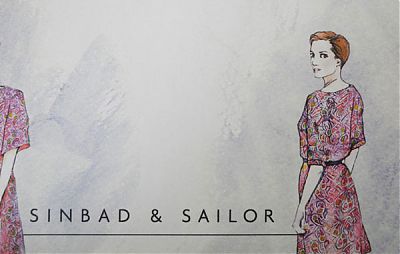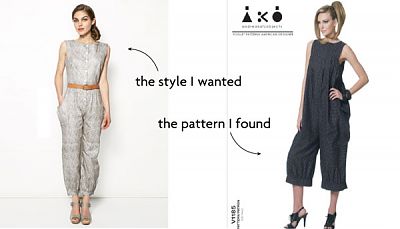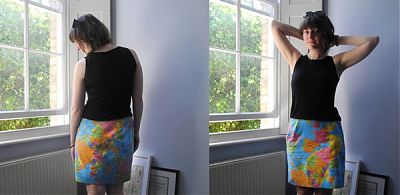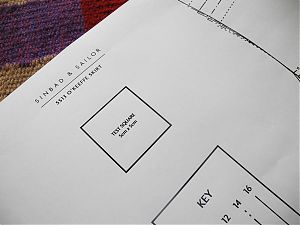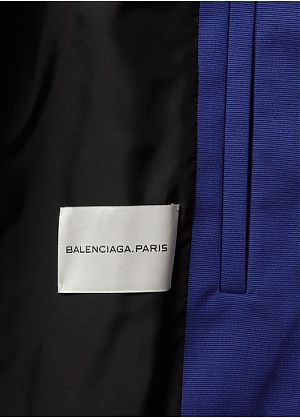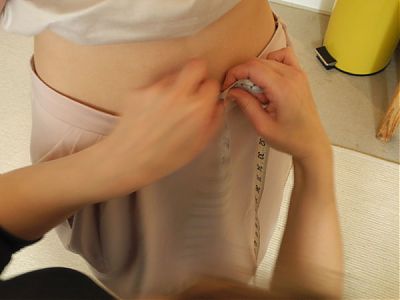As part of the wonderful Sewing Indie Month celebrations, each of us are collaborating and getting to know each other throughout the month of May. In the planning stages, I’d asked to partner with Sinbad & Sailor for a whole bunch of reasons – I’d been following her on Twitter for ages, I love the timelessness of her designs, and she also lives in London, yet somehow we’ve never managed to meet up!
Of course our first thought was to meet up in a pub somewhere and do the interview in person, but then we realised it’d probably be a lot more coherent if I interviewed her over email and celebrated with a drink later instead! So go grab a drink of your choice and come get to know Hannah!
1. How did you come up with the name Sinbad and Sailor? Do I sense a maritime connection at all?
No maritime connection in the S&S story it’s all land-based I’m afraid… When I was starting out it took me a long time to find the perfect name as I wanted something which reflected East London, where I’m based, living just one road away from where my Granddad grew up and also sewing (of course!). One friend suggested I look at Cockney Rhyming Slang (which is a fairly modern slang where phrases are derived from taking an expression which rhymes with a word and then using that expression instead of the word – ie. apples and pears = stairs) and see if anything had the right ring to it. I discovered that ‘Sinbad and sailor’ is cockney rhyming slang for tailor and I knew straight away that was perfect.
2. What gave you the push to start your own pattern company? Did you train in fashion, or did you segue from another career?
I have been sewing since school and studied fine art sculpture at UAL after which I went back to sewing in earnest. I’m a recipe following kinda gal and was always using patterns but found that the offerings felt very dated, hardly reflecting any current trends or styles which combined with their confusing instructions format created a frustrating sewing experience. Walking to work one day it struck me that if I was getting frustrated by the current shortfalls in sewing patterns perhaps other people were too. Rather than waiting and hoping that someone else would create these patterns I decided to be proactive and start making them myself.
3. In your mind, who is the quintessential S&S customer? What is her style?
The quintessential S&S customer is a woman who values her independence and likes to express herself through the way she dresses. Her style would be her interpretation of current trends and she’d be bold in her use of colour and prints when sewing (after all how are you going to rake in compliments with a plain back top?!)
4. When you’re developing your patterns, do you work solely in digital, or do you prefer to draft by hand and then digitise later?
Our patterns are all created the old school way – hand drafted by a professional pattern cutter whom I work with from the initial sketches through to multiple fit sessions. Once we are happy with the patterns fit this single size paper pattern is sent away to be digitized and graded (in laymans terms this is when one size is turned into different sizes) to our specifications.
5. Your patterns are all available as pdfs to print at home – what do you see as the advantages of this over traditionally printed “envelope”-style patterns?
Downloadable patterns have the speed which printed patterns can’t offer – once you purchase a pattern it can be downloaded straight away and you could be cutting out your garment in less than an hour. Another time saving benefit of digital patterns are that you can cut out your size rather than tracing the pattern off because if you aren’t happy with that size you can just re-print the pattern and start from the beginning, with a printed pattern you just don’t have this flexibility. Although I don’t see traditional printed patterns becoming near obsolete in the same way that say vinyl has become, I think that a growing number of people are discovering the benefit of digital patterns for time saving, flexibility and lowering their own environmental footprint. Combined with a growing choice of downloadable patterns I think it will be an important part of dressmaking in the future.
6. You refer to your patterns as “Catwalk inspired” – who are some of your favourite designers?
Personally with my sculptural background I’ve always been drawn to Hussein Chalayan and the conceptual work of Viktor and Rolf but these rarely influence the S&S designs as they are so wild and complex! The more grounded and wearable designers such Jil Sander, Chloe, Balenciaga, Anne Valerie Hash and Richard Nicoll would be more in line with my personal style and that of the S&S aesthetic but it’s great to see more extreme collections filter down to influence the highstreet. As a lover of print and pattern I should probably mention Mary Katrantzou and Antoni & Alison who are always firm favourites in this field, continually making me wonder why I don’t go one step further with my unique making ideas and design prints especially for printing and sewing up with.
7. If money and time were no object, what would your ultimate dream sewing project be?
I have always been drawn to couture and the laborious sewing techniques which form these pieces; at the Valentino, Master of Couture exhibition last year they had videos which demonstrated their unique sewing techniques by the atelier seamstresses and one which I was really drawn to was the ‘Pagine’ technique. This is created using many silk organza circles lain onto of one another then sewn at their centre, straight down onto the garment so each half of the circles moves freely. When worn the circles flap and wave which I think looks so beautiful so I’d love to make a simple dress and then spend the time applying the pagine technique to it.
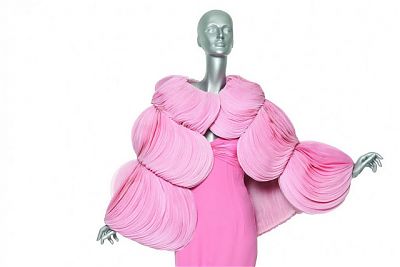
(Photo credit: Dressful)
8. Describe the process of developing a S&S pattern, from initial idea through to its release – what’s the timescale? What’s the testing like?
Creating a pattern is not a fast process by any means! I have to fit S&S around part time jobs and so the process takes approximately 6 months. The first few months will be focused on working with the pattern cutter to get the best fit from the pattern which will include multiple fittings our on fit model (someone who’s considered an average size and is comfortable having pins nearly stuck in her!). Once we’re happy with the patterns fit it is sent away to be professionally graded and on it’s return it’s time for me to put my nose to the grindstone! For the next stage I’ll be creating the instructions which I find the easiest to do if I am also making the garment so I’ll be moving between my notebook, sewing machine and computer frequently to ensure I don’t miss anything out. Instruction writing can take another few months as I’ll also be working on other aspects of the pattern which you regularly take for granted when sewing – layplans, size guides, fabric requirements and annotations on the patterns, creating A0 and A4 pattern versions.. they all need to be done with care and attention to ensure the information is accurate. It’s at the end of this stage that I need a fresh set of eyes and sewing machines to go over everything I’ve created so far.
This is where the testers come in, they play a vital role in the patterns development for which I am very grateful as they are volunteering their time to ensure the patterns are up to scratch. Each tester is sent the full pattern and instructions, though the information is all covered they are a little bare boned at the moment with the designing of the layout being left till last. Testing can take a month or so as people are fitting this in around their already busy lives so in the meantime I will probably be sewing myself one of the designs up in some nice fabric to get some real wear out of it and also work on the design of the pattern package. Once I can collate all the feedback I meticulously go through it to ensure each one is properly assessed and changes applied where necessary.
After the testers feedback has been actioned I then tidy up any final design elements in the pattern package, create a product description and upload the pattern on to the site! (this is the part where I pour myself a large glass of wine to celebrate!)
Creating sewing patterns is a process which demands accuracy and concentration at all times and it can be such a strain to fit it in around the rest of my life but somehow that melts away when you see another design or style that gets me thinking “I wish there was a pattern for that…”
9. What’s up next for S&S?
We’ve released our latest pattern the Hepworth Dress and I’m just enjoying this moment of finally sharing it with the world, it’s a long process and I feel sometimes you’re always pressured to think about the next step with a small business but this time I’m taking it easy. I’m keen to do a sew-along this summer which is unchartered waters for me but I think the Hepworth has some more complex aspects of construction than the previous S&S patterns and I’d like to inspire more people to stretch themselves by offering the guiding hand of a sew-along.
Thanks, Hannah! I’ve got your O’Keefe Skirt coming up shortly in my sewing queue, but would it be too fangirl to wear it to meet you??

